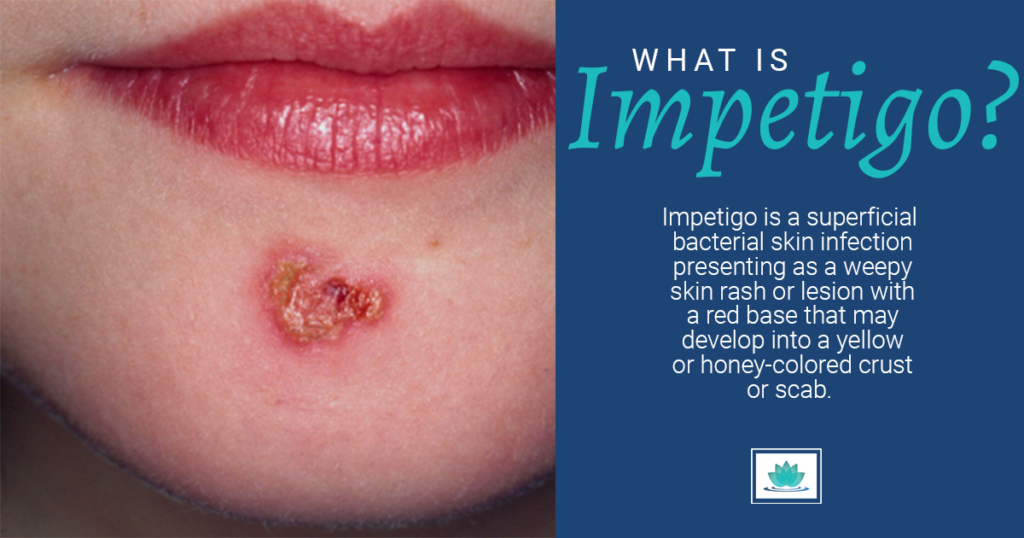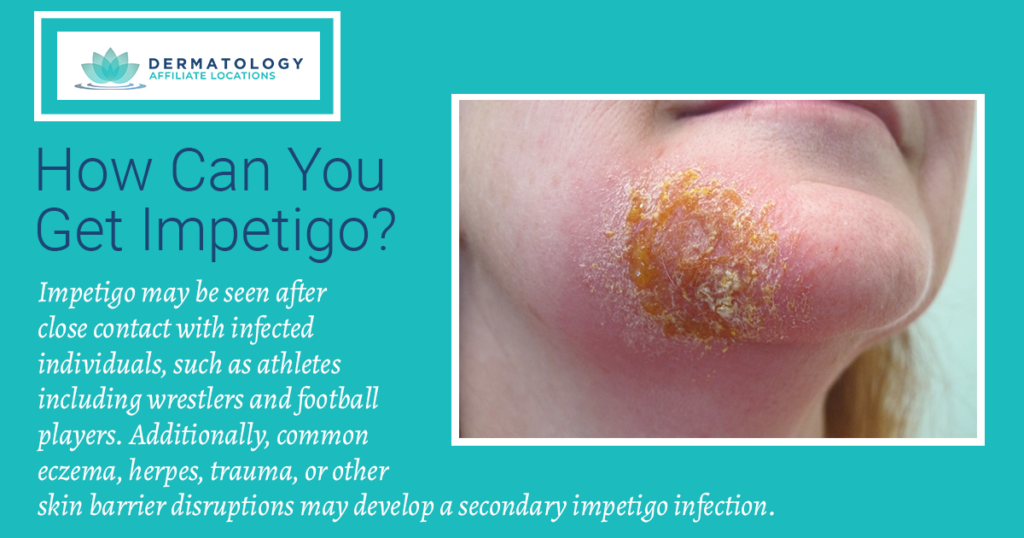Impetigo: What is it and How It Affects You
The last thing any of us wants is a skin infection. However, they do happen and it’s important to know what you’re dealing with when it inevitably finds you.
What is impetigo?

“Impetigo is a superficial bacterial skin infection where Staphylococcus aureus disrupts the skin barrier, resulting in the infection.”
Is impetigo contagious?
Yes, highly so. If you have impetigo, you should avoid being near or touching others, as the infection can easily spread.
Additionally, if you know someone who has this skin infection currently, make sure to avoid being touched by them and items that have been in contact with their infection, including clothes, towels, sheets, and more.
How is impetigo diagnosed?
“The most common method to diagnose impetigo is to perform a bacterial culture and sensitivity during your clinic visit. A swab of the infected area is sent to the laboratory to test for bacterial growth.”
This will identify what bacteria is growing and the best antibiotic choice. If there is a strong clinical suspicion, treatment is usually started prior to culture results.
Impetigo Symptoms
The symptoms of impetigo are distinct, but can easily be confused with other skin conditions. This is why it’s so important to make an appointment with your dermatologist before any sort of self-diagnosis.
“Impetigo presents as a weepy skin rash or lesion with a red base. There may be a yellow or honey colored crust or scab.”
Typically, impetigo is seen near the nose and mouth, but can spread to other areas of the body via touch.
Impetigo Causes
Staphylococcus aureus is the typical cause of impetigo and choosing an antibiotic to treat for this, in correlation with a consistent clinical exam, may also be done.
“This is highly contagious and may be seen after close contact with infected individuals, such as athletes including wrestlers and football players. Additionally, common eczema, herpes, trauma, or other skin barrier disruptions may develop a secondary impetigo infection.”

Impetigo Treatments
Based on test results, oral antibiotics are usually prescribed in order to ward off the infection, though you can also expect certain creams or ointments as well.
If you think you or someone you know might have this skin infection, make sure to book an appointment with a dermatologist to clear this up as soon as possible. Remember, it is contagious!
Reference: Plovanich M, Burgin S. Non-bullous impetigo. In: Goldsmith LA, ed. VisualDx. Rochester, NY: VisualDx; 2016. URL: https://www.visualdx.com/visualdx/diagnosis/non-bullous+impetigo?moduleId=101&diagnosisId=51763
About Elizabeth Drumm, FNP-C, DCNP

Elizabeth received her Bachelor’s of Science in Nursing from the University of Illinois in Urbana-Champaign. While working as a pediatric nurse, she completed the Family Nurse Practitioner program and earned her Master’s Degree from DePaul University in 2013. Initially, Ms. Drumm practiced as a Nurse Practitioner in pediatric hematology/oncology.
Prior to joining Dermatology Associates of LaGrange, Ms. Drumm completed an intensive two-year Dermatology Nurse Practitioner Fellowship training at Lahey Hospital & Medical Center in Burlington, Massachusetts.

